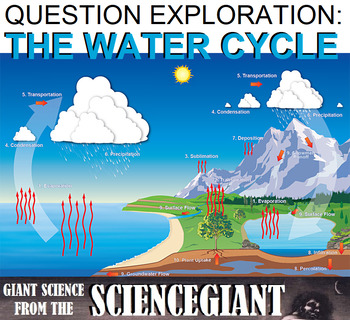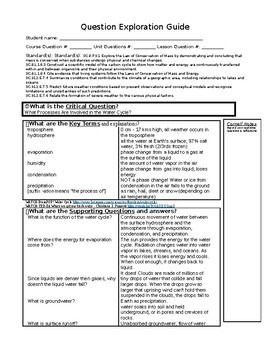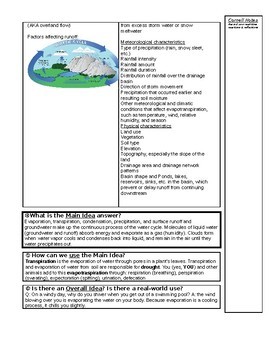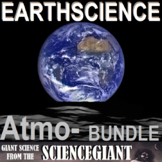Question Exploration: What Processes Are Involved in the Water Cycle?
- Word Document File
Also included in
- Teachers use the Strategic Instruction Model (SIM) Concept Enhancement Routines to transform abstract main ideas and key topics into a concrete representation that helps students think about and talk about the key topic and essential related information. SIM is about promoting effective teaching andPrice $20.65Original Price $29.50Save $8.85
Description
What Processes Are Involved in the Water Cycle? This Question Exploration helps Ss explain the water cycle -- the existence and movement of water on, in, and above the Earth. At its core, the hydrologic cycle is water (either as a liquid or solid), changing into water vapor (a gas) and back into a liquid or solid. This change of state of water as the water cycle is divided into three main parts:
- Moisture moving into the atmosphere
- Moisture moving through the atmosphere
- Moisture returning to the earth
The water cycle has been working for billions of years and all life on Earth depends on it continuing to work!
The Concept Comparison does a deeper dive into winter precipitation. Ss are encouraged to explain whether the weather will be rain, freezing rain, sleet, snow, hail or graupel. Their answers depend on applying their understanding of how the moisture is moving through the atmosphere and how the air masses are interacting.
Question Exploration Routine is an instructional methods that teachers can use to help a diverse student population understand a body of content information by carefully answering a critical question to arrive at a main idea answer. Students taught using the Content Enhancement routines earned higher total test scores than did students taught using the lecture-discussion method.
Personally, I use the routines to figure out what I want to say and how I want to say it. It keeps my "Sage on the Stage" time limited to what fits onto 2-3 pages (about 45 minutes of directed class discussion).
This product includes the completed question exploration guide, concept comparison, and the student guides blanked except for vocabulary, scaffolding questions, and graphics already filled in. And it's is in Microsoft Word .doc form so that Ts can customize the discussion to fit the needs of their Ss.
These Question Exploration Routines are classroom tested to help students with the following Florida Next Generation Sunshine State Standards in Science.
Students Will Be Able To (SWBAT/I Can)
- SC.8.P.9.1 Explore the Law of Conservation of Mass by demonstrating and concluding that mass is conserved when substances undergo physical and chemical changes.
- SC.8.L.18.3 Construct a scientific model of the carbon cycle to show how matter and energy are continuously transferred within and between organisms and their physical environment.
- SC.8.L.18.4 Cite evidence that living systems follow the Laws of Conservation of Mass and Energy.
- SC.912.E.7.4 Summarize conditions that contribute to the climate of a geographic area, including relationships to lakes and oceans.
- SC.912.E.7.5 Predict future weather conditions based on present observations and conceptual models and recognize limitations and uncertainties of such predictions.
- SC.912.E.7.6 Relate the formation of severe weather to the various physical factors.
Related Resources
- Logic Lineup Water Cycle puzzle
#StayGiant and stay up on my new resources and STEM news. Look for the green ★ star near the top of any page within my store and click "FOLLOW". Or follow @TheScienceGiant Twitter. Stand on The Shoulders of Giants, and together we'll see further, inspire students, and enlighten inquisitive minds!






